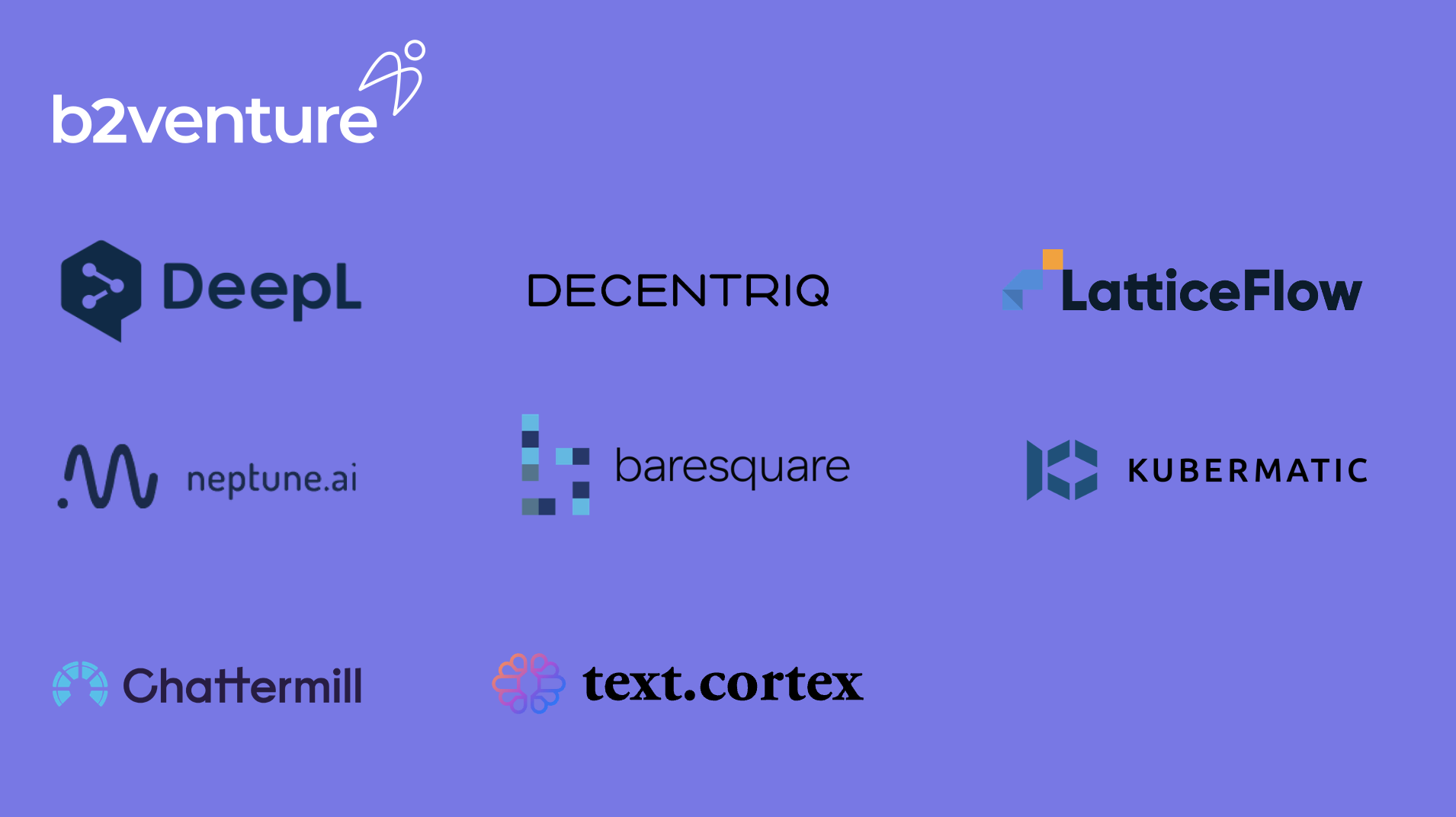How to think about generative AI and the current generation of LLMs
How to think about generative AI and the current generation of LLMs

ChatGPT was released almost a year ago and has led to a wave of enthusiasm that happens only once a decade or so in tech. Large Language Models (LLMs) like ChatGPT are providing capabilities that were barely imaginable just a few years ago. OpenAI, the company behind ChatGPT, is by no means alone in this market. Competitors such as Google, Anthropic, AI21 Labs, Aleph Alpha and Meta (which recently released its open source model, LLaMa 2) are reaching for a piece of this supposedly huge pie.
But what are LLMs really good for? Many see them as the gateway to Artificial General Intelligence (AGI), but we’re nowhere close to this level of human-like universal intelligence.
To benefit from the opportunities that LLMs provide in the here and now, we thought it would be a good idea to think about them in a somewhat more sober way.
What can LLMs do that’s truly new?
After seeing lots of cool demos, wild experiments, and early MVP products, we can conclude that LLMs have the following capabilities:
1. They’re a very flexible store of knowledge, based on their training data. When you ask ChatGPT a general question, that’s what you are using - a large, predefined store of knowledge that reacts to the nuances of the query. As opposed to a search engine or database, LLMs can be queried and they can respond in complex natural language, and the responses are highly specific to the query. Most importantly, they are not attached to a fixed data model, but can recombine a wide swathe of knowledge in very granular ways. Downside: the probabilistic approach that enables this behavior also leads to “hallucinations” — made-up facts that the model thinks are plausible, but are factually wrong.
2. LLMs can process natural language in a variety of sophisticated ways, and they are “programmable” with natural language prompts. For example, LLMs are great at extracting unstructured information from raw data such as a web page or a meeting transcript. Precision is not quite where it should be for all use cases, but this is clearly a huge step forward in terms of how we can process natural language and unstructured data in general (and similar concepts exist for computer vision).
3. They can process instructions and come up with a step-by-step plan to solve a particular problem. This is, in essence, a form of knowledge retrieval with the model recombining things it has learned from the training data. Yet it seems like the LLM is making novel decisions about how to solve a problem — a huge step towards realizing the concept of the autonomous intelligent agent, which is often considered one of the fundamental goals of artificial intelligence research.
The use cases that LLMs are currently applied to — such as general-purpose chatbots, refined semantic search engines or content writing — consistently follow from these general capabilities.
As in all hype cycles, we have already witnessed many misguided theories about the impact of these capabilities: “LLMs will replace all search engines”; “all future software UIs will be conversational”; “they will replace all human experts in the next couple of years”; “children will never learn to write themselves”; “we can’t trust written communications anymore because it might be an AI-generated lie”; “all developers will be replaced by AI”; and so on. Most of these claims are vastly overhyped interpretations of what the technology can do today.
What are the wider implications for the tech industry?
Beyond the hype, just what are the practical and realistic implications for the tech industry, given the current state of generative AI?
Here’s a few:
- Processing text and other forms of unstructured data has become easier and faster by orders of magnitude. While it hasn’t necessarily become cheaper, this will enable tons of improvements in existing software categories. Some examples include much more sophisticated semantic search, information extraction, content generation and summarization, and automated data loading. It could also enable entirely new categories that are currently still hard to imagine. One example I keep thinking about: what would a truly AI-first CRM system look like? One thing I can say - it’s probably not going to be like Salesforce with a chat box.
- A new generation of automation capabilities. Thanks to the agent-like capabilities of these LLMs, particularly by integrating them into other systems (think ChatGPT plug-ins on steroids), it is easy to imagine automating workflows that previously required lots of human touchpoints. For example, we at b2venture already have a prototype for automated market analysis based on LLMs.
- Chat-like UI elements can easily improve many software products. While not all software UIs will become conversational, many could benefit from adding this kind of layer.
- Cranking out routine code has become much faster. The best developers are going to see a 10x productivity improvement. This could also change the economics of new startups quite significantly.
How to think about the broader impact of LLMs

Analogies to previous waves of innovation are often helpful in trying to understand the potential impact of new technology. And regarding the current generation of LLMs, relational databases immediately come to mind.
Before relational databases were developed, handling data was cumbersome and slow (as a junior programmer at the beginning of my career I had to deal with index-sequential files, an incredibly clumsy way to store data). Relational databases made that much more flexible, faster, more consistent, and safer. It became vastly easier to create a CRUD (create, read, update, delete) application with assured data consistency because the database engine took care of all the heavy lifting in data storage and manipulation.
You can certainly argue that many of today’s LLM-based startups are just a thin wrapper around GPT and similar models. But that won’t be true for long. It’s a bit like saying that Salesforce or SAP are just thin wrappers around a relational database. Yes, fundamentally they are CRUD apps that just store and manipulate data, and the underlying data handling logic is provided by a database system. But all the built-in business logic, pre-configured data structures, automation, customization, UI, and the like are what really adds value.
The analogy makes a lot of sense on other levels:
- Databases are a market that is dominated by a handful of products (in relational databases: MySQL, PostgresDB, Oracle, Microsoft SQL Server, IBM DB2) but has historically left open space for newer vendors and even incumbents from adjacent sectors with interesting new concepts (e.g. MongoDB, SAP HANA, Snowflake). The LLM market could take a similar shape: a few dominant players for bread-and-butter functionality, but plenty of space for creative challengers.
- We all interact with databases every day, but rarely think about it. Pretty much every app on your smartphone uses some kind of database, but you probably don’t know or have to care about it. Most office workers have created a simple database in a spreadsheet at some point. Maybe you’ve even ventured into the realms of VLOOKUP and similar relational concepts to work with database-like structures. Similarly, the interaction with LLMs could happen on different levels of awareness and sophistication. In many cases, they will just be the language processing technology behind the scenes you’ll never see firsthand. In other cases, they will be a tool you use consciously to accomplish something.
- There are several layers of tooling on top of databases: this includes various programming frameworks, ETL tools, backup infrastructure, no-code tools, and the like. Similarly, LLMs will need tooling to work. This sector is emerging rapidly with programming frameworks such as Langchain and Llama Index, as well as adjacent tools, such as vector databases.
Remembering Amara’s Law
Databases are a rather boring technology to most people. How does the relational database/LLM analogy comport with both the strong enthusiasm and fear about LLMs? How can we compare what today is a fairly pedestrian technology such as databases with something that might turn into Artificial General Intelligence (AGI) some day?
As is so often the case, it’s wise to consider Amara’s Law: we tend to overestimate the effect of a technology in the short run and underestimate the effect in the long run. That happens during every new wave of technology.
It’s increasingly clear that today’s LLMs are an incredibly useful and impressive technology, but still very far away from becoming AGI. Yes, LLMs can be very useful right now beyond a few entertaining ChatGPT demos. Yet I believe it will take quite a long time for them to have a truly revolutionary impact on technology and society.
Until then we should think of LLMs as what they are right now: a tremendously useful new technology and a true step change in what computers can do. Yet we should also keep in mind that, like databases, they are but one component of a much larger tech industry, and it will require time and trial and error to work out just how we can create truly useful and revolutionary products with them.

ChatGPT was released almost a year ago and has led to a wave of enthusiasm that happens only once a decade or so in tech. Large Language Models (LLMs) like ChatGPT are providing capabilities that were barely imaginable just a few years ago. OpenAI, the company behind ChatGPT, is by no means alone in this market. Competitors such as Google, Anthropic, AI21 Labs, Aleph Alpha and Meta (which recently released its open source model, LLaMa 2) are reaching for a piece of this supposedly huge pie.
But what are LLMs really good for? Many see them as the gateway to Artificial General Intelligence (AGI), but we’re nowhere close to this level of human-like universal intelligence.
To benefit from the opportunities that LLMs provide in the here and now, we thought it would be a good idea to think about them in a somewhat more sober way.
What can LLMs do that’s truly new?
After seeing lots of cool demos, wild experiments, and early MVP products, we can conclude that LLMs have the following capabilities:
1. They’re a very flexible store of knowledge, based on their training data. When you ask ChatGPT a general question, that’s what you are using - a large, predefined store of knowledge that reacts to the nuances of the query. As opposed to a search engine or database, LLMs can be queried and they can respond in complex natural language, and the responses are highly specific to the query. Most importantly, they are not attached to a fixed data model, but can recombine a wide swathe of knowledge in very granular ways. Downside: the probabilistic approach that enables this behavior also leads to “hallucinations” — made-up facts that the model thinks are plausible, but are factually wrong.
2. LLMs can process natural language in a variety of sophisticated ways, and they are “programmable” with natural language prompts. For example, LLMs are great at extracting unstructured information from raw data such as a web page or a meeting transcript. Precision is not quite where it should be for all use cases, but this is clearly a huge step forward in terms of how we can process natural language and unstructured data in general (and similar concepts exist for computer vision).
3. They can process instructions and come up with a step-by-step plan to solve a particular problem. This is, in essence, a form of knowledge retrieval with the model recombining things it has learned from the training data. Yet it seems like the LLM is making novel decisions about how to solve a problem — a huge step towards realizing the concept of the autonomous intelligent agent, which is often considered one of the fundamental goals of artificial intelligence research.
The use cases that LLMs are currently applied to — such as general-purpose chatbots, refined semantic search engines or content writing — consistently follow from these general capabilities.
As in all hype cycles, we have already witnessed many misguided theories about the impact of these capabilities: “LLMs will replace all search engines”; “all future software UIs will be conversational”; “they will replace all human experts in the next couple of years”; “children will never learn to write themselves”; “we can’t trust written communications anymore because it might be an AI-generated lie”; “all developers will be replaced by AI”; and so on. Most of these claims are vastly overhyped interpretations of what the technology can do today.
What are the wider implications for the tech industry?
Beyond the hype, just what are the practical and realistic implications for the tech industry, given the current state of generative AI?
Here’s a few:
- Processing text and other forms of unstructured data has become easier and faster by orders of magnitude. While it hasn’t necessarily become cheaper, this will enable tons of improvements in existing software categories. Some examples include much more sophisticated semantic search, information extraction, content generation and summarization, and automated data loading. It could also enable entirely new categories that are currently still hard to imagine. One example I keep thinking about: what would a truly AI-first CRM system look like? One thing I can say - it’s probably not going to be like Salesforce with a chat box.
- A new generation of automation capabilities. Thanks to the agent-like capabilities of these LLMs, particularly by integrating them into other systems (think ChatGPT plug-ins on steroids), it is easy to imagine automating workflows that previously required lots of human touchpoints. For example, we at b2venture already have a prototype for automated market analysis based on LLMs.
- Chat-like UI elements can easily improve many software products. While not all software UIs will become conversational, many could benefit from adding this kind of layer.
- Cranking out routine code has become much faster. The best developers are going to see a 10x productivity improvement. This could also change the economics of new startups quite significantly.
How to think about the broader impact of LLMs

Analogies to previous waves of innovation are often helpful in trying to understand the potential impact of new technology. And regarding the current generation of LLMs, relational databases immediately come to mind.
Before relational databases were developed, handling data was cumbersome and slow (as a junior programmer at the beginning of my career I had to deal with index-sequential files, an incredibly clumsy way to store data). Relational databases made that much more flexible, faster, more consistent, and safer. It became vastly easier to create a CRUD (create, read, update, delete) application with assured data consistency because the database engine took care of all the heavy lifting in data storage and manipulation.
You can certainly argue that many of today’s LLM-based startups are just a thin wrapper around GPT and similar models. But that won’t be true for long. It’s a bit like saying that Salesforce or SAP are just thin wrappers around a relational database. Yes, fundamentally they are CRUD apps that just store and manipulate data, and the underlying data handling logic is provided by a database system. But all the built-in business logic, pre-configured data structures, automation, customization, UI, and the like are what really adds value.
The analogy makes a lot of sense on other levels:
- Databases are a market that is dominated by a handful of products (in relational databases: MySQL, PostgresDB, Oracle, Microsoft SQL Server, IBM DB2) but has historically left open space for newer vendors and even incumbents from adjacent sectors with interesting new concepts (e.g. MongoDB, SAP HANA, Snowflake). The LLM market could take a similar shape: a few dominant players for bread-and-butter functionality, but plenty of space for creative challengers.
- We all interact with databases every day, but rarely think about it. Pretty much every app on your smartphone uses some kind of database, but you probably don’t know or have to care about it. Most office workers have created a simple database in a spreadsheet at some point. Maybe you’ve even ventured into the realms of VLOOKUP and similar relational concepts to work with database-like structures. Similarly, the interaction with LLMs could happen on different levels of awareness and sophistication. In many cases, they will just be the language processing technology behind the scenes you’ll never see firsthand. In other cases, they will be a tool you use consciously to accomplish something.
- There are several layers of tooling on top of databases: this includes various programming frameworks, ETL tools, backup infrastructure, no-code tools, and the like. Similarly, LLMs will need tooling to work. This sector is emerging rapidly with programming frameworks such as Langchain and Llama Index, as well as adjacent tools, such as vector databases.
Remembering Amara’s Law
Databases are a rather boring technology to most people. How does the relational database/LLM analogy comport with both the strong enthusiasm and fear about LLMs? How can we compare what today is a fairly pedestrian technology such as databases with something that might turn into Artificial General Intelligence (AGI) some day?
As is so often the case, it’s wise to consider Amara’s Law: we tend to overestimate the effect of a technology in the short run and underestimate the effect in the long run. That happens during every new wave of technology.
It’s increasingly clear that today’s LLMs are an incredibly useful and impressive technology, but still very far away from becoming AGI. Yes, LLMs can be very useful right now beyond a few entertaining ChatGPT demos. Yet I believe it will take quite a long time for them to have a truly revolutionary impact on technology and society.
Until then we should think of LLMs as what they are right now: a tremendously useful new technology and a true step change in what computers can do. Yet we should also keep in mind that, like databases, they are but one component of a much larger tech industry, and it will require time and trial and error to work out just how we can create truly useful and revolutionary products with them.

The Author

Andreas Goeldi
Partner
Andreas Goeldi is Partner and has been part of the b2venture Fund Team since 2019. He is an avid technologist, serial entrepreneur, and investor with over 25 years’ experience.
Team


















.png)




.jpg)
-min.png)


.jpg)













































.jpg)





















